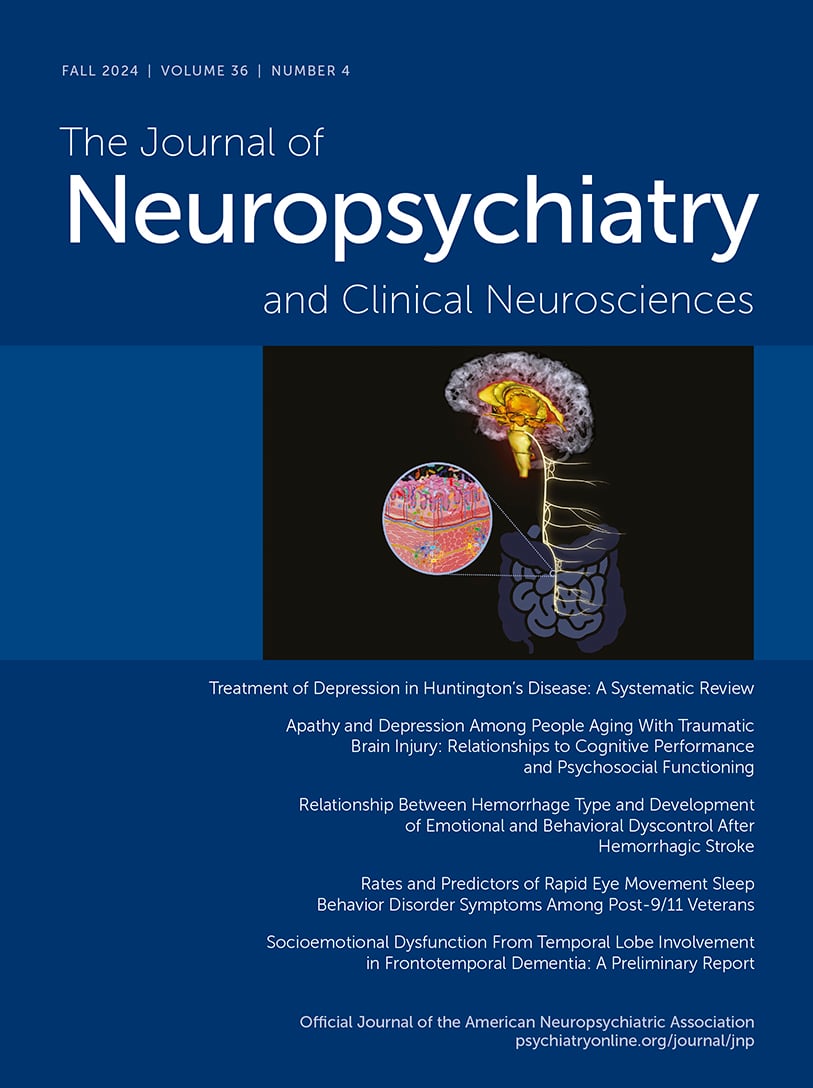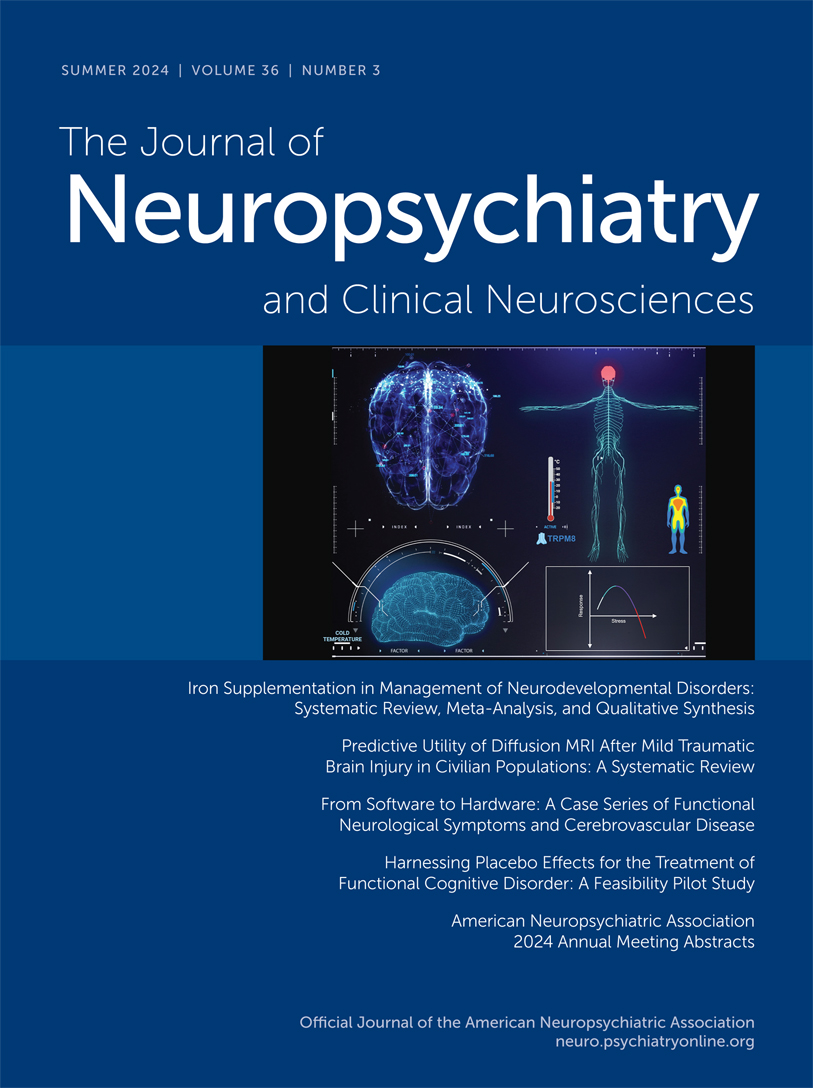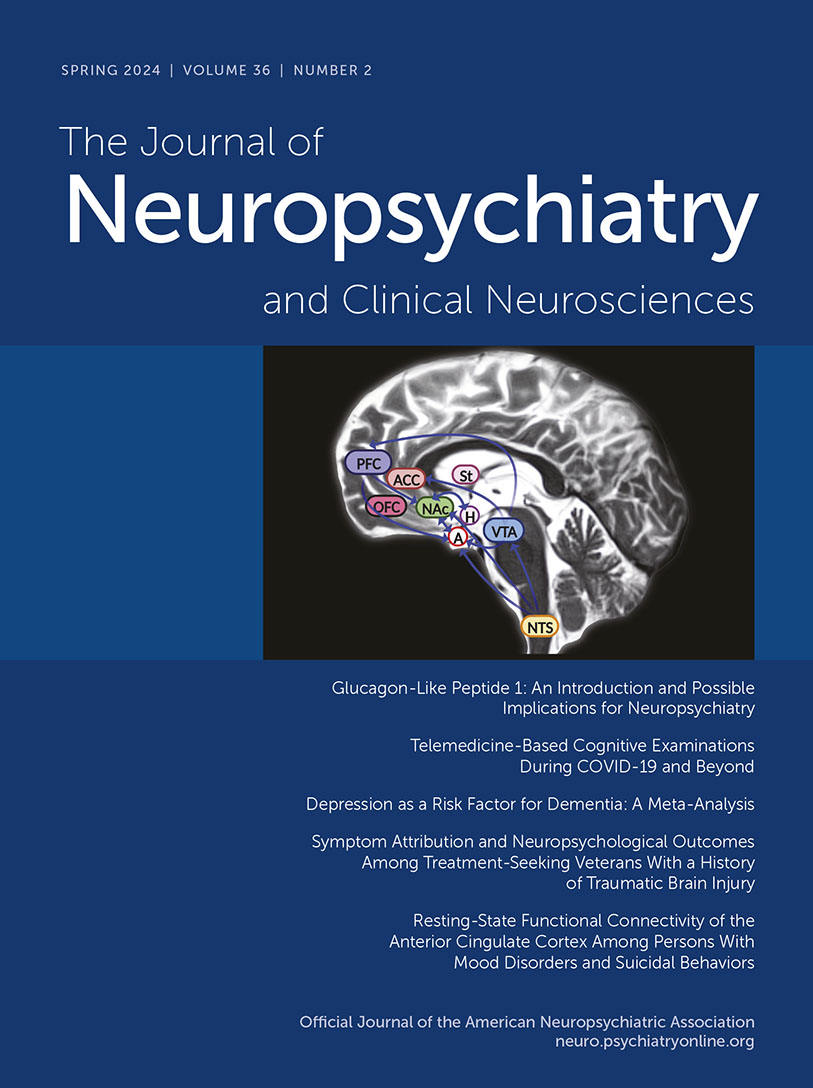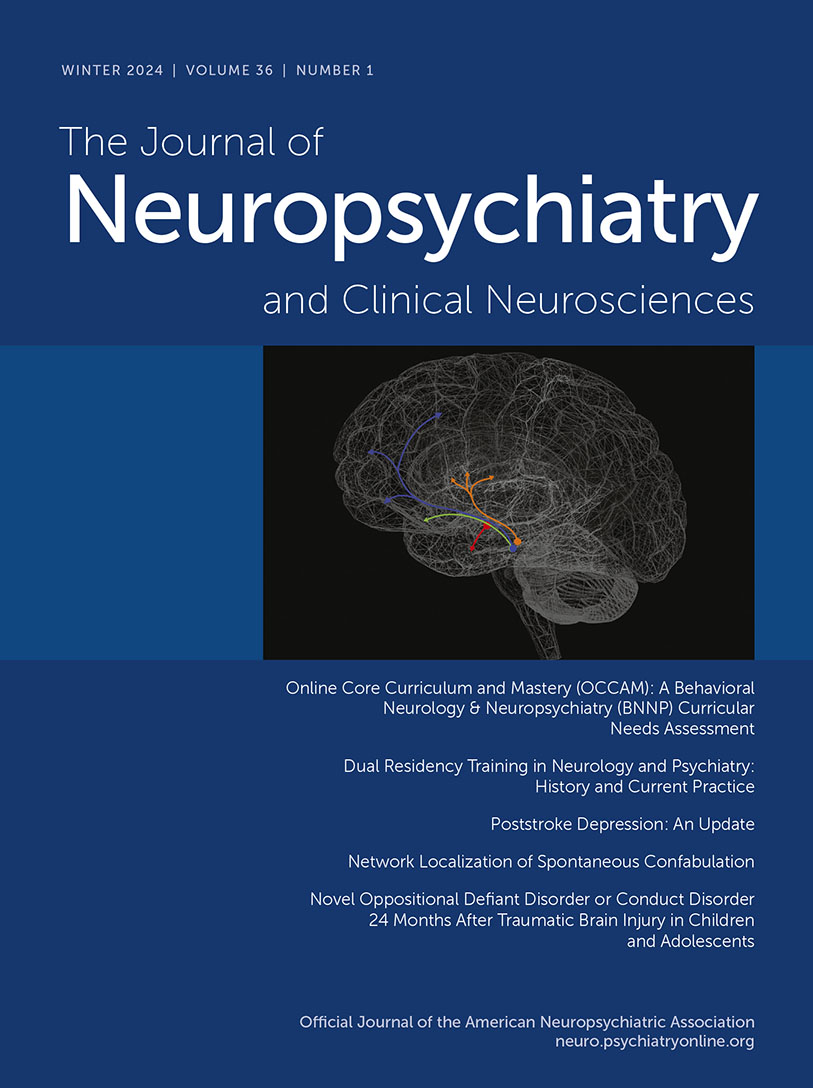The Journal of Neuropsychiatry and Clinical Neurosciences
- Volume 11
- Number 4
- November 1999
Editorial
Windows to the Brain
Regular Article
Publication date: 01 November 1999
Pages426–435Twenty-two depressed adults were scanned with perfusion single-photon computed emission tomography before and after 2 weeks of left prefrontal transcranial magnetic stimulation (TMS) in a parallel design, double-blind treatment study. At medication-free ...
https://doi.org/10.1176/jnp.11.4.426Publication date: 01 November 1999
Pages436–443Sixty-two patients with medically intractable complex partial seizures who had either surgical or no surgical intervention were followed up at a mean of 10.9 years after surgery or initial evaluation. Of the 49 surgical patients, 45% had a lifetime ...
https://doi.org/10.1176/jnp.11.4.436Publication date: 01 November 1999
Pages444–453Neuropsychological manifestations of bilateral anterior cingulate cortex lesions were studied in patients treated with cingulotomy for chronic intractable pain. Cingulotomy patients more than 1 year postsurgery were contrasted with nonsurgical chronic ...
https://doi.org/10.1176/jnp.11.4.444Publication date: 01 November 1999
Pages454–457The authors studied the relationship of EEG abnormalities and violent criminal behavior in 222 defendants referred for psychiatric evaluation. There was no connection between the number of violent offenses and EEG abnormalities in general. Focal ...
https://doi.org/10.1176/jnp.11.4.454Publication date: 01 November 1999
Pages458–463The aim of this study was to assess prognosis among adult patients with nonepileptic seizures (NES) and to determine predictor variables for resolution of NES after diagnosis. Six to 9 months after receiving a video-EEG-documented diagnosis of NES, 43 ...
https://doi.org/10.1176/jnp.11.4.458Publication date: 01 November 1999
Pages464–469DSM-III-R personality disorders were assessed in 52 medically refractory epileptic patients. Twenty-one percent of patients met threshold criteria for an Axis II disorder. Dependent and avoidant personality disorders were the most common diagnoses. ...
https://doi.org/10.1176/jnp.11.4.464Publication date: 01 November 1999
Pages470–474The areas of seven subregions of the corpus callosum and three subregions of the cerebellum were examined on midsagittal magnetic resonance imaging scans of 27 low-IQ autistic individuals and 17 nonautistic individuals of comparable mental age. Autistic ...
https://doi.org/10.1176/jnp.11.4.470Publication date: 01 November 1999
Pages475–480A case-control study of 19 patients with HIV-associated mania and 57 HIV-seropositive control patients matched by CD4 cell count, age, and year of treatment was undertaken to investigate associations with risk factors for human immunodeficiency virus (HIV)...
https://doi.org/10.1176/jnp.11.4.475Publication date: 01 November 1999
Pages481–489This study focused on the symptomatic and cognitive effects of the atypical antipsychotic clozapine in chronic hospitalized schizophrenia patients. Further, it explored how these effects might be related to discharge, an important functional outcome. ...
https://doi.org/10.1176/jnp.11.4.481Publication date: 01 November 1999
Pages490–497The authors examined the severity and type of deficits in remote memory in patients with probable Alzheimer's disease (AD). In the first study, 40 AD patients showed significantly more severe deficits on both the free-recall and the recognition sections ...
https://doi.org/10.1176/jnp.11.4.490Publication date: 01 November 1999
Pages498–503The distinctive neuropsychiatric features of Alzheimer's disease (AD), dementia with Lewy bodies (DLB), and frontotemporal dementia (FTD) were investigated by using the Neuropsychiatric Inventory. The patients with FTD had significantly more euphoria, ...
https://doi.org/10.1176/jnp.11.4.498Clinical and Research Reports
Publication date: 01 November 1999
Pages504–506Persisting insomnia secondary to traumatic brain injury, rarely reported and documented, is described in an adult male following head injury. The neuronal mechanisms underlying this sleep disorder as well as the neuropsychological concomitants and ...
https://doi.org/10.1176/jnp.11.4.504Neuropsychiatric Practice and Opinion
Book Reviews
Letter
Appreciation
Calendar
Past Issues
View Issues Archive
Vol. 36 | No. 4

Vol. 36 | No. 3

Vol. 36 | No. 2
